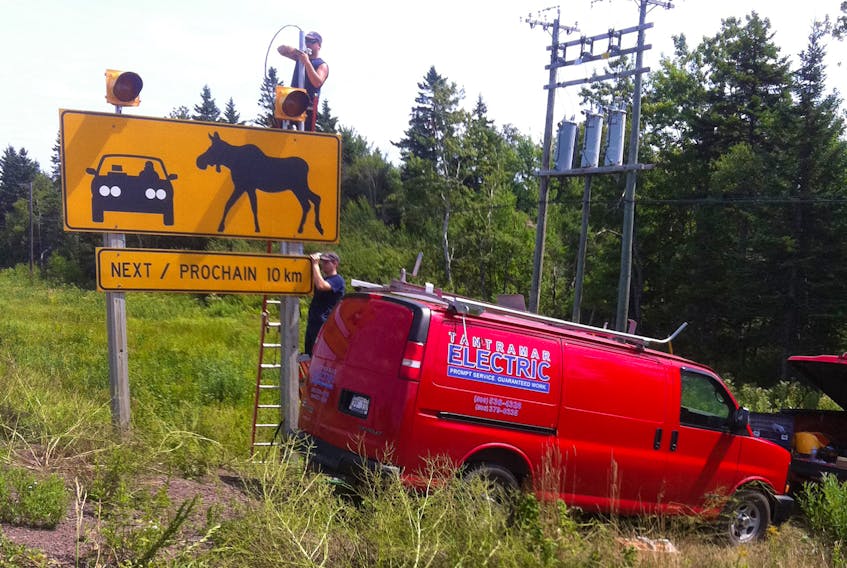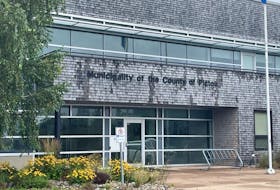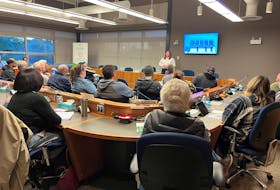
A moose-vehicle collision (MVC) can happen in the blink of an eye, something Melrose, N.B., resident Shaun Murphy knows first-hand.
A bus driver in the Sackville, N.B. area, Murphy was headed to work just over a year ago, along a route he had travelled many times.
“I was on my way to work at about 6:30 in the morning. It was raining, dark, and I was just past the (Port Elgin) traffic circle towards Sackville. At about 100 kilometres an hour, I saw a moose stepping onto the highway out of the ditch, so I switched lanes to give him lots of room. I looked up and there was another moose standing in the lane I switched to. I hit him right on. I couldn’t have hit him more centre.”
The moose Murphy hit easily weighed between 800 and 1,000 pounds. Miraculously, although the moose was killed and his vehicle was totalled and filled with glass, he walked away without a scratch.
More than 400 New Brunswickers are involved in an MVC every year, according to the provincial Department of Transportation and Infrastructure (DTI), with most crashes occurring between dusk and dawn when moose are hardest to see. Collisions also more likely to occur between May and October, when the animals leave the forest to escape the flies and heat and to feed on vegetation in ditches.
The only other province in Atlantic Canada where more MVCs occur annually is Newfoundland and Labrador.
Prince Edward Island has no moose population, and the chance of an MVC in mainland Nova Scotia is comparatively low, as the province’s moose population stands at about 1,000, compared to New Brunswick’s more than 29,000 animals, according to Nature Conservancy of Canada data.
Long-standing issue

In New Brunswick, MVCs have been an especially common occurrence along the 20-kilometre stretch of highway between Port Elgin and the Confederation Bridge, an area the province’s DTI has deemed high-risk.
Between 2006 and 2010, there were 37 MVCs along that stretch of highway. By mid-2012, three people – including a Cape Tormentine couple and a man from Charlottetown, P.E.I. – had been killed and several others had sustained minor injuries in collisions with moose, resulting in a public meeting where then-MLA for Tantramar Michael Olscamp outlined possible options: erecting fencing, installing lighting in high moose-traffic areas and culling excess animals.
In an August 2012 interview with the Sackville Tribune-Post, Olscamp said he had met with representatives of the Department of Natural Resources and Energy to suggest a moose cull.

“They gave me a lot of biological reasons why we can’t do that. I asked about extending the (moose hunting) season; they can’t do that either.”
And, in a 2014 interview with the Charlottetown Guardian, Olscamp said fencing was also not an option as there are too many breaches and driveways along the stretch of highway - something Jeremy Trevors, a communications officer with New Brunswick’s DTI, recently confirmed.
“Wildlife fencing is one way to reduce the risk of collision; however, it is not always possible,” he explained. “It is particularly difficult to install wildlife fencing on non-controlled access highways due to the number of residential and commercial accesses. Each one of these accesses would provide an entry point for wildlife.”
Trevors added DTI works in consultation with the province’s Department of Energy and Resource Development in determining where to install moose fencing based on wildlife mitigation criteria, including collision statistics.
The department also takes other measures to reduce the risk of wildlife collisions, such as regular brush cutting to enhance visibility on roadways and installing enhanced signage with warning lights cautioning motorists to slow down.
Murphy, like Trevors, says speed can increase a person’s chances of being involved in an MVC.
“I was one of them,” he said. “It was the prime time for moose, and I was travelling too fast.”
He also agrees that moose fencing in the Port Elgin area is not an option.
“Other than increasing the quota in moose season, I’ve got nothing. Putting street lights from here to Aulac and Port Elgin to Cape Tormentine really isn’t feasible either but it certainly wouldn’t hurt.”
Read more about our Need for Speed, its risks and consequences









